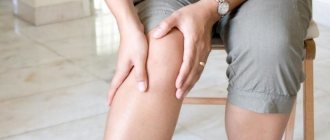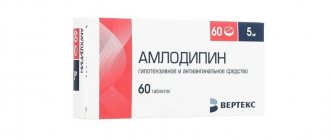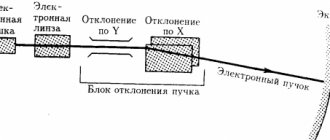What is the essence of the diet?
The mechanism of long-term restriction in essential nutrients that enter the body with various foods acts in such a way that the frequency of epileptic seizures is significantly reduced.
Sometimes attacks disappear completely, which allows a person to live a full life. After prescribing a diet, the doctor constantly monitors the patient’s condition and, if any complications arise or the condition worsens, takes the necessary measures.
The main principle of the diet is based on fasting. During the first three days, the patient should drink boiled or filtered water. It is strictly forbidden to use mineral water due to its composition.
During the fasting regime, physical activity should be minimized, in some cases even bed rest is required.
After three days of fasting, the patient switches to eating solid food. This transition must be carried out gradually.
The daily food intake is divided into small portions (about 3 times less than usual). Eating occurs more than five times a day.
It is very important that the patient himself learns to calculate the amount of necessary nutrients that are necessary to maintain normal functioning and general physical condition.
Diet for epilepsy
The ketogenic diet (or keto diet) is a special menu consisting primarily of fats and proteins, while the list of permitted components also includes carbohydrates, but in limited quantities. Approximate proportions of fat and protein are 3:1 and 4:1.
What is the essence of such a diet:
- The brain absorbs only glucose (it comes from carbohydrates), which saturates, nourishes and gives strength. Having received energy, the brain activates all its capabilities, spreading impulses along the nerve fibers. Impulses become provocateurs of active neurological actions, epileptic seizures.
- A large amount of fats and proteins entering the body triggers the process of their breakdown, during which the liver actively secretes ketone. At the same time, there are so few carbohydrates that they cannot harm.
- Ketone is an organic substance that completely replaces glucose, while being harmless to the body. The brain spends enormous resources on burning sugar, which leads to fatigue, weakness, and neurological disorders. Ketone becomes the very energy that is needed to maintain health.
Thus, fatty foods become a source of energy and at the same time inhibit nerve impulses. Now the keto diet is popular as a way to lose weight, but doctors do not recommend using it unless absolutely necessary.
What foods can you eat?
Despite the food restrictions, the list of permitted foods is quite extensive:
- butter and vegetable oil;
- fat cottage cheese, cream;
- sour cream, mayonnaise;
- milk, sour milk;
- fried and boiled yolks;
- sea fish and seafood;
- fatty meat, chicken;
- fresh fruits;
- avocado;
- greens, vegetables;
- meat bacon;
- hard cheese;
- rich broth;
- green tea.
Soups, salads with mayonnaise, and meat cutlets are recommended. In the morning it is advisable to eat scrambled eggs, you can add cream or sour cream.
Peculiarities of nutrition in children
The keto diet was originally developed for children with epilepsy. You can follow a low-carbohydrate diet from the age of 1 year - before this it is not recommended to limit nutrition due to the risk of delayed physical and mental development, as well as hypoglycemia (a sharp drop in blood sugar levels). A doctor's supervision is required.
In the first 1-3 weeks, rapid weight loss, fatigue and overwork, and mood swings are possible. A lack of carbohydrates in children can lead to a decrease in growth rate, so you will have to take additional vitamin and mineral complexes (calcium, magnesium, folic acid, vitamins B and D). In addition, at the beginning of the diet, the child is given ultra-fat drinks to prepare the body for the intake of large amounts of fat.
Nutritional features in adults
Dietary restrictions in adults can cause some disorders and complications, since the body is already accustomed to a certain diet. This is why doctors recommend starting ketogenic treatment in a hospital hospital - here the patient will be under the supervision of specialists who will promptly provide medical assistance in case of complications.
The keto diet begins with fasting - for the first 3-4 days the patient drinks only plain water without gas. It is also undesirable to eat later than 3 hours before bedtime. This is necessary in order to painlessly rebuild metabolic processes and not harm the functioning of the gastrointestinal tract. Any products are introduced gradually and the person’s condition is monitored. If positive results appear, the diet is continued; if side effects occur, the diet is suspended or the menu is changed.
Diet duration
The duration of dietary treatment depends on age, type and stage of the disease, and the body’s reaction to the new menu. To fully get used to a low-carb diet, children will need 2-4 weeks, adults - 1-3 weeks. The duration of the course is determined only by the attending physician. On average, you need to stick to a diet from 6 months to 2 years, but during this time the patient gets used to eating fatty and protein foods subconsciously. Periodically you will have to take tests and undergo instrumental diagnostics so that the doctor can monitor the dynamics of recovery.
Features of the diet for children
As for the treatment of children with epilepsy from one to twelve years of age, a ketogenic diet is prescribed in cases where seizures cannot be controlled with antiepileptic drugs. Most often, the diet is prescribed to patients with Lennox-Gastaut syndrome.
Also, many data indicate that very high results can be achieved in the treatment of the following pathologies:
- West syndrome;
- Dravet syndrome;
- Bourneville disease;
- Duse syndrome;
- motor spasms.
In general, this diet can be used in combination with other therapy for each case of the disease, unless there are specific contraindications.
A slightly modified diet is used to treat children. The main difference from the standard diet is the principle of using special fatty cocktails, which are made on a milk basis. This drink has a special composition developed by a specialist nutritionist.
An analogue of a cocktail can be ice cream prepared according to the same principle. Thanks to this diet, children get used to eating very fatty foods, which have an antiepileptic effect. The rest of the dishes that are included in the menu are selected by the doctor.
Nutritional therapy for epilepsy
Epilepsy is a severe chronic disease of the nervous system. In terms of frequency, it is perhaps the most common. According to some estimates, up to 40 million people in the world suffer from this disease. Moreover, this disease occurs not only in humans, but also in some animals - dogs, cats. This disease is popularly called falling sickness. The essence of this disease is that the patient’s body is predisposed to sudden seizures.
Why do seizures occur? Scientists have proven that a seizure occurs when all neurons in one area of the cerebral cortex are simultaneously excited. The cause of this phenomenon can be injuries, bad habits and bad heredity.
Interestingly, various diets for the treatment of epilepsy have been used since ancient times. Even in biblical times, such an ailment was treated by fasting. And only recently, scientists have proven that the use of a ketogenic diet for epilepsy reduces the number of seizures by up to 50% almost from the first day of use, especially in children. This is evidenced by numerous reviews from those patients who have tried it on themselves.
Contraindications and side effects
People with epilepsy are prohibited from starting a diet on their own. Before starting, you should definitely consult your doctor, as there are some contraindications for it:
- kidney and liver diseases - a huge amount of fat has a detrimental effect on these organs, i.e. they may simply not cope with the load;
- heart and vascular diseases;
- metabolic disorder;
- diabetes - if this rule is not followed, the diet can cause the most severe consequences;
- diseases of the endocrine system.
When following a diet, it is very important to keep a special diary in which you need to note the frequency and duration of convulsive seizures.
The resulting statistics will help the doctor determine the duration of the diet.
In some cases, there is a risk of various side effects:
- decreased physical activity;
- regular constipation;
- formation of kidney stones;
- decrease in blood acidity levels;
- dehydration;
- weakening of bones, and as a result - the risk of frequent fractures;
- increased cholesterol levels.
Those people for whom this diet is contraindicated should limit themselves to consuming poorly digestible, heavy, spicy, salty, smoked foods and marinades. It is also necessary to reduce fluid intake in any form.
Modern treatment of epilepsy
Modern chemotherapy drugs used to treat epilepsy alleviate, but do not cure the disease; moreover, they damage the psyche. Epilepsy is treated for years, sometimes throughout life. If there are no seizures while taking anticonvulsants, they cannot be canceled abruptly, otherwise the seizures may recur with renewed vigor. In general, it is difficult to call this a treatment; in fact, it is simply a muffling of symptoms.
In general, the whole world has been successfully fighting this disease for a long time, but for us everything is still difficult! Yes, it seems that there are centers with modern equipment that are able to find the cause of the disease and treat exactly the cause, but it is difficult for an ordinary person to get there. So the person is left alone with his diagnosis and traditional methods and herbal medicine come in. Let's say right away that this is not entirely correct, herbal medicine is very good in this case as a supporting method of treatment, but not as the main one, although for many, unfortunately, this is the only method of treatment.
Sample menu for 6 days
The menu is compiled for 6 days and may look like this. The first three days, plain water.
Day 4:
- 2 boiled chicken eggs, a small spoon of butter, coffee with cream;
- 2 sausages, a teaspoon of mayonnaise, half a tomato;
- fat cottage cheese with sour cream (150 gr.);
- boiled chicken breast with butter (10 g);
- steam beans with olive oil (2 tablespoons).
Day 5:
- bread with butter;
- 150 gr. turkey meat;
- vegetable salad with onions;
- cabbage soup with sour cream;
- fried pork meat with tomatoes;
- scrambled eggs with brisket;
- fresh cucumber;
- bread.
Day 6:
- 4 hard-boiled quail eggs;
- coffee with cream;
- 150 gr. boiled beef;
- boiled turkey meat;
- tomatoes with mayonnaise;
- a small piece of boiled lean fish;
- boiled asparagus.
Small snacks are allowed between main meals. You can eat:
- yogurt;
- fermented baked milk;
- kefir;
- cottage cheese.
Dish recipes
There are many interesting recipes for nutritious and tasty dishes. Here are some of them:
Scrambled eggs and ham
Products:
- 2 eggs;
- 50 gr. ham;
- 50 gr. processed cheese;
- 1 tbsp. spoon of butter;
- herbs and/or seasonings.
Fry the ham, then beat in the eggs. Towards the end of the cooking process, add cheese and cook the dish over low heat for several minutes. Season with herbs or spices before use.
Grilled sweet peppers
- Products:
- 2 pcs. Luke;
- spices (to taste);
- 200 gr. pepper;
- 1 tbsp. spoon of olives;
- 2 tbsp. spoons of olive oil;
- 1 teaspoon capers;
- vinegar.
Chop the peppers and marinate them in a pre-prepared sauce from the above ingredients. Place on a baking sheet and bake until done.
Turnips in the oven
Products:
- 450 gr. turnip;
- 150-200 gr. cheese;
- 1 chicken egg;
- 1 tbsp. spoon of butter;
- 2 tbsp. spoons of sour cream;
- greenery;
- seasonings, salt.
Pour the peeled turnips with water and cook for about an hour. Then cool, beat in a blender and mix with spices and sour cream. Then beat in the egg and add the cheese, then beat the ingredients in a blender again.
Place this mass in a mold and place in the oven (temperature should not be less than 170 degrees). The dish should be cooked until a crust appears. At the end, sprinkle herbs and spices on top.
When to call an ambulance
It is recommended to call an ambulance in the following cases:
- If the attack occurs for the first time, then it is also better to hospitalize the child for a thorough examination.
- In case of injury during convulsions - if the baby is cut, hit, etc.
- If the duration of the convulsions is more than five minutes.
When calling an ambulance, tell the operator everything as it is, tell about the nature of the seizure, its symptoms, the patient’s condition, etc.
After a seizure in an epileptic who is taking appropriate medications, you need to visit a neurologist in order to correct the treatment regimen.










